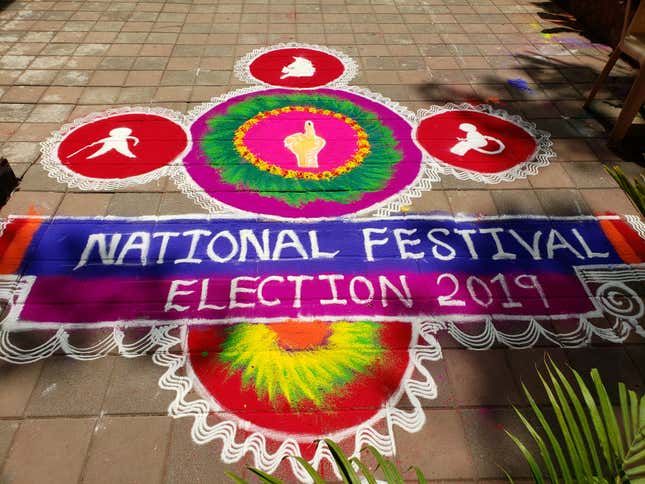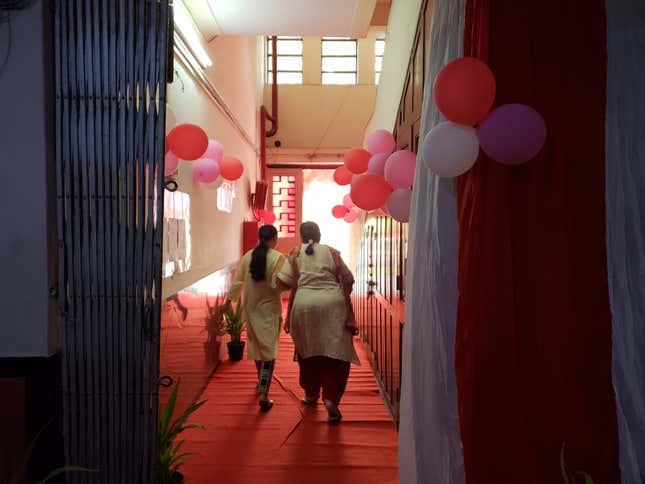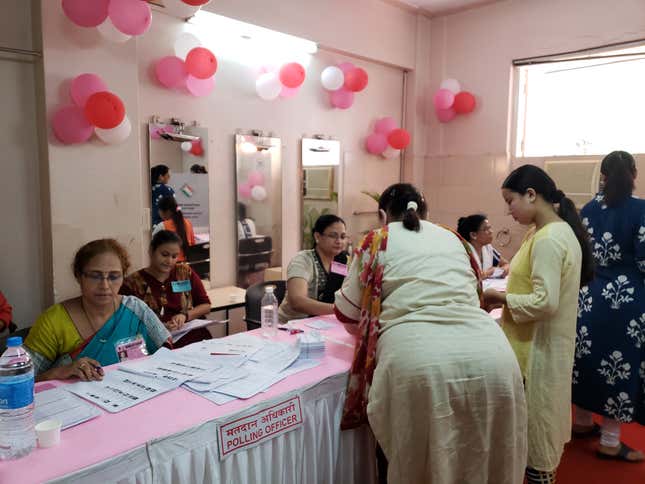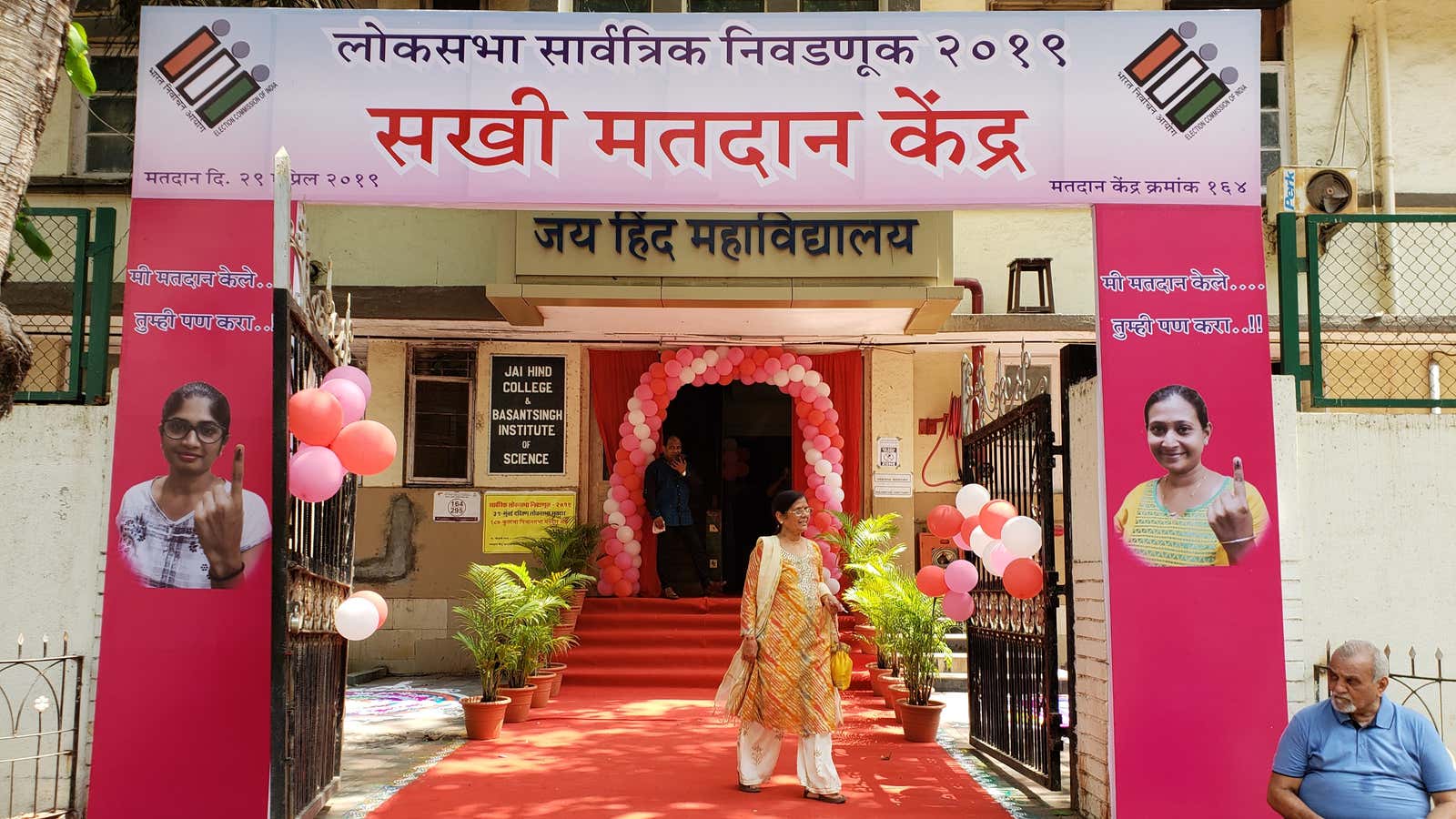The entrance gate of Colaba’s polling booth 164 in Mumbai South is decorated with pink, white, and red balloons. A banner reads “sakhi election center”—sakhi is a Hindi word meaning “female friend”—and photographs on each side depict two female voters, proudly showing their inked index finger.
This is a so-called “pink booth”, where the entire staff, including police and security personnel, is meant to be female in order to encourage women to vote. Historically, women’s turnout has been lower than men’s, but it’s gone up drastically in the past few elections, and the trend suggests they may be the majority of voters this year.

India is halfway through holding the biggest election in world history, the Lok Sabha election, which is held in seven phases between Apr. 11 and May 19. Its results will be announced on May 23. On Apr. 29, the fourth phase of voting was held in several states, including parts of Maharastra, where all of Mumbai went to the polls.
As part of its push to increase women turnout, the Election Commission of India (ECI) is striving to have at least one pink booth set up in each assembly, the subdivisions of each electoral district, an agency spokesperson tells Quartz. Several states have embraced the idea, though the ECI doesn’t have a pink booth count.
These booths don’t just have a female staff, but they also offer a variety of services that can range from a waiting room to drinking water to childcare arrangements. Women also get tokens to mark their place in line, so that they don’t have to wait, often under the sun, for their turn to vote.
The degree to which a polling booth adheres to the “pink” model depends on the location and the resources, says the ECI. For example, one could occasionally see the odd male worker at these booths, too.
At poll 164, set up in a science college in the Churchgate neighborhood of Mumbai South, there isn’t a crèche, though the polling station does offer a separate room for mothers with small children. The booth also gives voters—particularly those who are elderly—an opportunity to sit down while waiting.
The decor, which presiding officer Subharti Pandey says was commissioned to an external contractor, does stand out from the typical booth. Alongside the standard booth supplies, such as posters with instructions and information on candidate names and symbols, there are desks covered in pink paper and election-inspired rangolis (drawings created with colored powders on the floor) welcoming voters at the entrance.

The Churchgate booth serves 980 voters, both female and male. Many of the voters Quartz met hadn’t initially realized the booth was “pink” (to their credit, one of the officers was a man, and so were a couple of the policemen outside the voting station). But the overall sentiment was of approval.
“Everywhere there should be women staff,” says Femina Shah, an interior designer.
“There are a lot of women police now,” she says, adding that they make women feel safer. She wishes for “more female druggists and chemists,” too.
For Sapna Kamdar, a business owner, the benefits of the pink booth aren’t so much a matter of safety as of equality. “It’s women empowerment,” she says. “Anyway, I think women are more capable.”

But other female voters weren’t as sold on the concept. Jayshree Shah, a housewife, thinks it’s better to have men also looking after the voting, for safety reasons.
Still, the booth’s staff think it is a good initiative. “We are promoting the female voters,” says Pandey.
Sachin Desai, the odd male officer in the mix, said that women had expressed appreciation for the efforts to make their voting more comfortable. At about 9:00 am, he said he was hoping the booth’s turnout would be 100%.
By 6 pm, when the polls were about to close, the turnout was just above half what he wanted: at 54%, with 529 votes cast out of 980 voters. That’s about the same as in the 2014 Lok Sabha election.
Read Quartz’s coverage of the 2019 Indian general election here.
